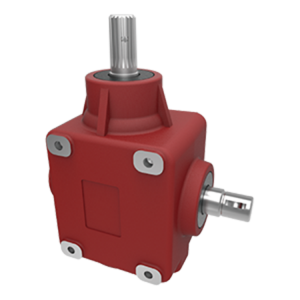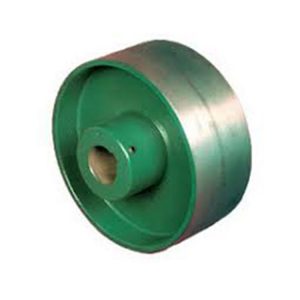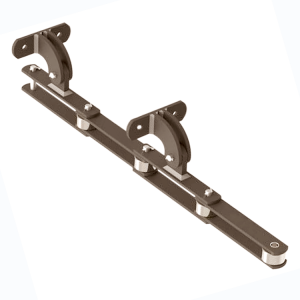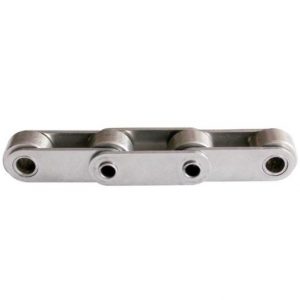Product Description
Customized belt conveyor drive drum pulley
mining belt conveyor drum head pulley drive drum roller
Product Application
CHINAMFG conveyor pully is manufactured as per customer requirement, with main design unfer national standard, quality inspection focusing on shaft core, welded joint, rubber material and hardness, dynamic balance and so on for longer product lifetime.
Our products are widely used in thermal power generation, harbours, cement plants, metallurgy and as well as the light duty conveying devices for industries.
|
SPECIFICATIONS |
|||
|
Product name |
belt conveyor pulley drum |
||
|
Type |
Transmission drum, Redirection drum, Driving Electric drum |
||
|
Length |
200mm-1800mm |
||
|
Materials |
Carbon steel, Stainless steel, Rubber |
||
|
Surface treatment |
Smooth, CHINAMFG grooved lagging, Herringbone lagging, Ceramic lagging |
||
|
Welding |
Submerged arc welding |
||
|
Bearing |
SKF, CHINAMFG and other brands at home and abroad |
||
|
Structure |
Tube,shaft,self-aligning bearing,bearing seat/house,hub, locking bushing,end disc |
||
About roller,we can make gravity conveyor roller,steel conveyor roller,driving roller,light middle duty conveyor roller,o-belt tapered sleeve roller,gravity tapered roller,polymer sprocket roller and so on. More details, please contact us.
Main Feature
1) CHINAMFG design, suitable for heavy lifting.
2) The bearing housing and steel tube are assembled and welded with a concentric automatic.
3) Cutting of the steel tube and bearing is performed with the use of a digital auto device/machine/equipment..
4) The bearing end is constructed to ensure that the roller shaft and bearing can be firmly connected.
5) Fabrication of the roller is effected by an auto device and 100% tested for its concentricity.
6) Roller and supporting components/materials are manufactured to DIN/ AFNOR/ FEM/ ASTM/ CEMA standard.
7) The casing is manufactured with highly composite, anti corrosive alloy.
8) The roller is lubricated and free from maintenance.
9) Woring life expectancy is up to 30,000 hours or more, depending on usage.
10)Vacuum sealed which has withstood anti water, salt, snuff, sandstone and dust proof experiments
/* March 10, 2571 17:59:20 */!function(){function s(e,r){var a,o={};try{e&&e.split(“,”).forEach(function(e,t){e&&(a=e.match(/(.*?):(.*)$/))&&1
| Material: | Carbon Steel |
|---|---|
| Surface Treatment: | Baking Paint |
| Motor Type: | Frequency Control Motor |
| Installation: | Horizontal |
| Color: | Customized |
| Certification: | ISO9001-2015 |
| Samples: |
US$ 500/Piece
1 Piece(Min.Order) | |
|---|
| Customization: |
Available
| Customized Request |
|---|
How do multiple pulleys in a block and tackle system work together?
In a block and tackle system, multiple pulleys are used in combination to create a mechanical advantage, allowing for easier lifting of heavy loads. The pulleys in a block and tackle system work together in the following manner:
1. Load Distribution: The weight of the load to be lifted is distributed over multiple strands of rope or cable that pass through the pulleys. This distribution of weight helps in reducing the force required to lift the load.
2. Mechanical Advantage: The mechanical advantage in a block and tackle system is achieved by increasing the number of rope segments that support the load. Each additional pulley increases the number of rope segments, which in turn reduces the amount of force needed to lift the load. The mechanical advantage is equal to the number of segments of rope supporting the load.
3. Tension Distribution: As the load is lifted, the tension in the rope or cable changes. In a block and tackle system, the tension is distributed among the various segments of rope or cable connected to the pulleys. This distribution of tension ensures that the load is lifted evenly and prevents excessive stress on any single rope segment.
4. Rope Arrangement: The pulleys in a block and tackle system are arranged in two sets: the fixed pulleys and the movable pulleys. The fixed pulleys are attached to a fixed point, such as a beam or a ceiling, and do not move. The movable pulleys are attached to the load being lifted and can move freely. The arrangement of the pulleys determines the mechanical advantage and the direction of force required to lift the load.
By combining these principles, multiple pulleys in a block and tackle system allow for the effective lifting of heavy loads with reduced effort. The mechanical advantage provided by the pulleys makes it possible to lift loads that would otherwise be too heavy to lift manually. Block and tackle systems are commonly used in various applications, including construction, rigging, sailing, and theatrical setups.
How do pulleys contribute to the functioning of bicycles and motorcycles?
Pulleys play important roles in the functioning of both bicycles and motorcycles, aiding in power transmission, speed control, and overall mechanical efficiency. Here’s how pulleys contribute to the operation of these vehicles:
1. Bicycles:
– Derailleur System: In most modern bicycles, pulleys are used in the derailleur system. The derailleur is responsible for shifting the bicycle chain between different gears on the front and rear sprockets. Pulleys, often referred to as jockey wheels, are positioned in the derailleur to guide and tension the chain as it moves between gears. They ensure smooth and precise shifting, allowing the rider to adapt to various terrains and maintain an optimal pedaling cadence.
– Belt Drive Systems: Some bicycles use a belt drive instead of a traditional chain drive. Belt drives employ a pulley system that consists of a front pulley attached to the pedal crank and a rear pulley attached to the rear wheel hub. The belt is wrapped around these pulleys, transferring power from the rider’s pedaling motion to propel the bicycle forward. Pulleys in belt drive systems enable efficient power transfer, reduce maintenance needs, and provide a quieter and cleaner alternative to chain drives.
2. Motorcycles:
– Clutch System: Pulleys, known as clutch pulleys, are utilized in motorcycle clutch systems. The clutch connects the engine to the transmission and allows the rider to engage or disengage power transmission to the rear wheel. When the clutch lever is pulled, the clutch pulley separates the engine’s rotational motion from the transmission, disengaging power transfer. Releasing the clutch lever brings the pulley back into contact, engaging power transmission and enabling the motorcycle to move.
– Variable Transmission Systems: Some motorcycles employ pulleys in variable transmission systems, such as continuously variable transmissions (CVT). CVTs use a pair of pulleys connected by a belt or chain. By changing the diameter of the pulleys, the CVT adjusts the gear ratio continuously, providing seamless and efficient power delivery across a wide range of speeds. Pulleys in variable transmission systems contribute to smooth acceleration, improved fuel efficiency, and enhanced riding comfort.
– Drive Belt Systems: Pulleys are also utilized in motorcycles equipped with belt drive systems. Similar to bicycles, these systems consist of a front pulley connected to the engine’s crankshaft and a rear pulley connected to the rear wheel. The belt runs around these pulleys, transferring power from the engine to the rear wheel. Belt drive systems offer advantages such as reduced maintenance, quieter operation, and smoother power delivery compared to traditional chain drives.
Overall, pulleys are integral components in bicycles and motorcycles, contributing to smooth gear shifting, efficient power transmission, and improved overall performance. Whether in derailleur systems, belt drive systems, clutch systems, or variable transmission systems, pulleys play a vital role in enhancing the functionality and ride experience of these vehicles.
What are the different types of pulleys commonly used in industry?
Pulleys are widely used in various industries for different applications. Here are the different types of pulleys commonly used:
1. Fixed Pulleys: Fixed pulleys are attached to a stationary structure, such as a ceiling or wall. They change the direction of the force applied without providing any mechanical advantage. Fixed pulleys are often used in combination with other pulleys to create more complex systems.
2. Movable Pulleys: Movable pulleys are attached to the load being moved, and they move along with it. These pulleys provide mechanical advantage by reducing the effort required to lift the load. Movable pulleys are commonly used in systems such as block and tackle arrangements to lift heavy objects with less force.
3. Compound Pulleys: Compound pulleys consist of a combination of fixed and movable pulleys. They provide a greater mechanical advantage than a single pulley by distributing the load over multiple segments of the rope or belt. Compound pulley systems are often used in applications that require lifting extremely heavy loads.
4. Snatch Blocks: Snatch blocks are pulleys with a side plate that can be opened to insert or remove a rope or cable without threading it through the pulley. They are commonly used in rigging and towing applications to change the direction of force and create a mechanical advantage.
5. V-Belt Pulleys: V-belt pulleys have a V-shaped groove that matches the cross-section of V-belts. They are used in belt drive systems to transmit power between two shafts. V-belt pulleys are commonly found in applications such as industrial machinery, automotive engines, and HVAC systems.
6. Timing Pulleys: Timing pulleys have teeth that mesh with the teeth of a timing belt. They are used in synchronous drive systems to ensure accurate and synchronized power transmission. Timing pulleys are commonly used in applications such as robotics, printing presses, and CNC machines.
7. Rope Pulleys: Rope pulleys have a smooth surface designed to minimize friction and prevent wear on ropes. They are commonly used in applications where ropes are used for lifting or pulling, such as cranes, elevators, and material handling equipment.
8. Wire Rope Pulleys: Wire rope pulleys are specifically designed for use with wire ropes. They have grooves or pockets that accommodate the shape and size of wire ropes, ensuring secure grip and efficient force transmission. Wire rope pulleys are commonly used in applications such as cranes, winches, and hoists.
9. Idler Pulleys: Idler pulleys are used to guide and tension belts or ropes in a system. They do not transmit power but help maintain proper belt tension and alignment. Idler pulleys are commonly used in conveyor systems, automotive engines, and other belt-driven applications.
10. Sheave Pulleys: Sheave pulleys are large pulleys used in heavy-duty applications, such as crane systems and elevators. They are designed to handle high loads and provide smooth and reliable operation. Sheave pulleys often have multiple grooves to accommodate multiple ropes or belts.
These are some of the different types of pulleys commonly used in various industries. Each type has specific features and is selected based on the requirements of the application, such as load capacity, power transmission, and operational conditions.
editor by CX
2024-02-04















